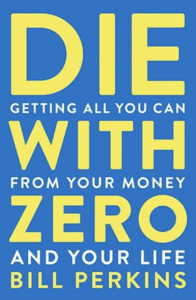XGRO ETF is a multi-asset ETF that invests in one or more ETFs managed by BlackRock Canada or its affiliates, providing exposure to equity and fixed income securities. The ETF offers long-term capital growth as well as income to investors. XGRO ETF provides exposure to a portfolio of ETFs that is diversified by asset class and regions.
iShares XGRO ETF is managed in accordance with a long-term strategic asset allocation of ~80% equity and ~20% fixed income exposure. The ETF underwent changes in the fundamental investment objective, management fee, and fee structure effective December 11, 2018.
The ETF is part of group of 5 ETFS that can be used to manage a portfolio based on your desired fixed income and equity exposure.
Pros of iShares XGRO ETF
- Inexpensive ETF with an MER of 0.20%.
- It is continuously monitored and also rebalanced quarterly.
- XGRO provides exposure to ETFs that are diversified across regions and asset classes.
Cons of iShares XGRO ETF
- Provides exposure to equity ETFs managed only by BlackRock Canada.
- XGRO is massively biased towards Canada.
- XGRO’s MER is higher than all its other components individually. You pay to have someone rebalance – it’s like a concierge service fee.
iShares XGRO ETF Facts
- Inception Date: June 21, 2007
- Benchmark: None – 80% Equity ETF from iShares Core Growth ETF Portfolios
- Net Assets: $957M
- MER: 0.20%
- Distribution Yield: 1.51%
- Dividend Schedule: Quarterly
iShares XGRO ETF MER – Management Expense Ratio
XGRO’s management fee stands at 0.18% and MER is 0.20%.Its contemporaries Vanguard’s VGRO and Blackrock’s ZGRO have MERs of 0.25% and 0.20%, respectively.
The MER is what Blackrock takes to manage the fund for you. It’s much cheaper than mutual funds and in some cases cheaper than investing on your own.
Mutual funds can charge over 2% and it robs you of your returns. It’s time to ditch your mutual funds and switch to ETF ASAP. Many brokers such as Questrade offer free ETFs.
iShares XGRO ETF Performance
The annual rate of return for iShares XGRO ETF since inception is 4.30%. It has underperformed the broader S&P500 index in the last five years.
It’s a pretty lame performence but then it recently beats the TSX.
When it comes to investing 100% in equity, there are many options. A simple SP500 index can do the trick. You know the saying, keep it stupid simple (KISS).

Take your TFSA account as an example. The rules are the same for everyone and I mean everyone. The growth is ultimately a factor of your investment performance provided you make your TFSA contribution limit every year. The annual performance of an ETF matters as you can see below the growth over 20+ years.
iShares XGRO ETF Holdings
Unlike an S&P500 ETF where your exposure is from US companies, XGRO is diversified across countries and continents.
The iShares XEQT Core Equity ETF Portoflio invests in 4 different ETFs to bring the outlined geographical diversification.
The equity section is below. Same ETFs as XEQT but with a different ratio.
- ITOT – (36.88%) ISHARES CORE S&P TOTAL U.S. STOCK
- XIC – (20.67%) ISHARES S&P/TSX CAPPED COMPOSITE
- XEF – (19.91%) ISHARES MSCI EAFE IMI INDEX
- IEMG – (3.94%) ISHARES CORE MSCI EMERGING MARKETS
Now for the fixed income part (20%), the following ETFs are used.
- XBB – (11.60%) ISHS CORE CAD UNIV BND IDX ETF
- IEMG – (3.94%) ISHARES CORE MSCI EMERGING MARKETS
- USIG – (1.92%) ISHARES BROAD USD INVESTMENT
- GOVT – (1.86%) ISHARES US TREASURY BOND ETF
XGRO ETF invests ~80% in equities and ~20% in fixed income as opposed to XBAL’s 60:40 ratio. This fund is more included towards growth.
The ETF can also invest a small amount of cash or cash equivalents from time to time. It also has investments in US Treasury bonds.
Why hold iShares XGRO ETF
XGRO offers a growth solution with a perfect blend of 80% equity and 20% bonds. It is a good option for investors who are beginning to invest.
It is simple, well-diversified, and a low-cost ETF. XGRO also provides balanced geographic diversification. The ETF provides a good opportunity to investors looking for long-term growth and income solutions, are planning to hold the investment for the medium to long term, and are comfortable with a low to medium level of risk.
It is cheaper, gets rebalanced quarterly, and the asset and geographic diversification are added advantages. It’s a hands off solution.
I vote to stick with an S&P500 ETF such as VFV.
If you want the dividends, it’s not clear you will get the same growth but the the best banks and the best utility stocks will give you more income.

